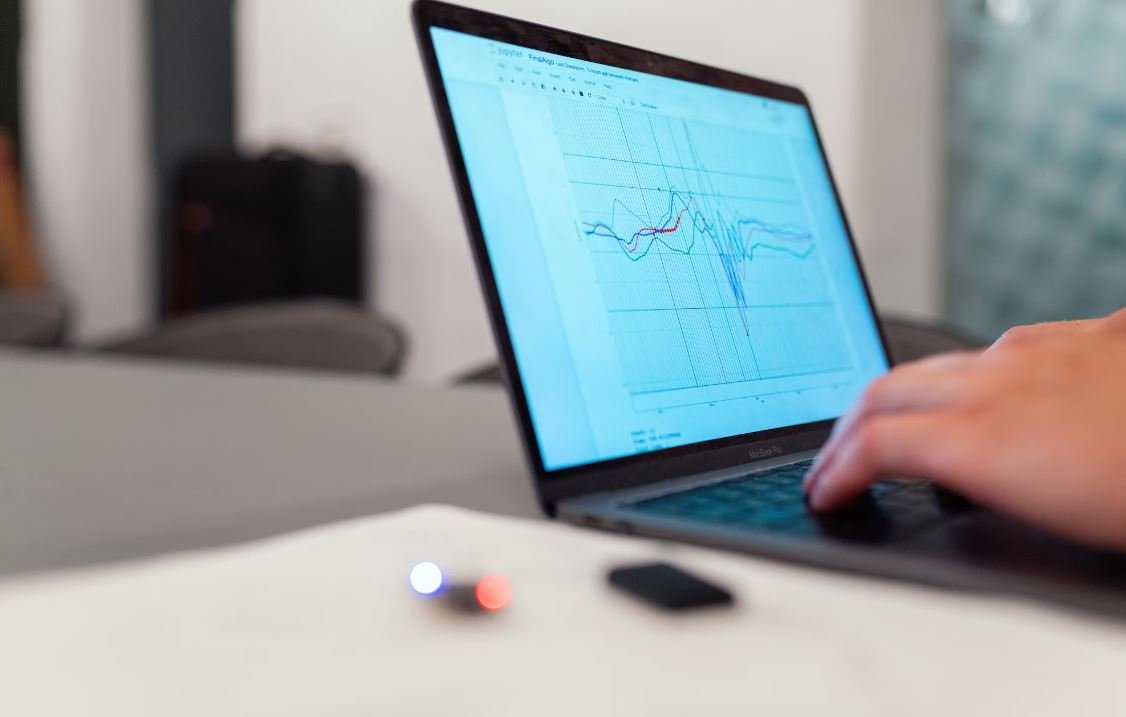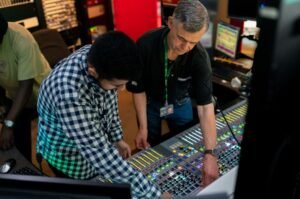AI Image to Vector
Artificial Intelligence (AI) has made significant advancements in various fields, including image processing and graphic design. One of the innovative applications of AI technology is the conversion of images into vector format. Traditional images are composed of pixels, which may limit their scalability and image quality. However, by converting images to vectors, AI algorithms can create versatile and high-quality graphics, suitable for various purposes. In this article, we explore AI image to vector conversion and its benefits in more detail.
Key Takeaways:
- AI image to vector conversion allows for scalable and high-quality graphics.
- Vector graphics are composed of mathematical formulas, making them easily editable and adaptable.
- AI algorithms analyze pixel-based images and recreate them in vector format.
- Vector graphics are ideal for logos, illustrations, and other graphic design projects.
Understanding AI Image to Vector Conversion
AI image to vector conversion is a process where AI algorithms analyze pixel-based images and recreate them in vector format. Vectors are graphics composed of mathematical formulas instead of individual pixels, allowing for scalability without loss of quality. This conversion is made possible by utilizing machine learning techniques, which enable AI models to learn the patterns and characteristics of various objects and shapes found within images.
*By employing AI algorithms, accurate and efficient image to vector conversions can be achieved.*
The Benefits of AI Image to Vector Conversion
Converting images to vector format offers several advantages over traditional pixel-based images:
- Scalability: Vector graphics can be resized without loss of quality, ensuring consistent visualization across different sizes and devices.
- Editability: Vector graphics allow for easy editing and modification, enabling designers to make changes to colors, shapes, and lines with precision.
- Flexibility: Vector graphics can be easily adapted for various purposes, such as logos, illustrations, animations, and printing.
- Sharability: Vector images can be compressed and shared more efficiently, reducing file size while retaining image quality.
The AI Image to Vector Conversion Process
The process of AI image to vector conversion involves the following steps:
- Image Analysis: The AI algorithm analyzes the pixel-based image to identify different objects, shapes, and patterns within the image.
- Feature Extraction: The algorithm extracts relevant features and transforms them into mathematical representations.
- Vector Reconstruction: The extracted features are used to recreate the image in vector format by converting them into mathematical formulas.
- Refinement: The AI model refines the vector image by optimizing the curves, colors, and other elements to enhance the overall quality and fidelity.
Tables:
| Pixel Images | Vector Graphics |
|---|---|
| Composed of pixels | Composed of mathematical formulas |
| Resolution-dependent | Resolution-independent |
| Scaling may result in quality loss | Scaling does not affect image quality |
| Logo Design | Illustrations | Printing |
|---|---|---|
| Vector logos can be easily resized and adapted for various marketing materials. | Vector illustrations offer flexibility for digital and print media. | Vector graphics ensure high-quality prints without pixelation. |
| File Format | Description |
|---|---|
| SVG (Scalable Vector Graphics) | An XML-based format suitable for web graphics and scalable icons. |
| Ai (Adobe Illustrator) | A proprietary vector graphic format widely used in professional design software. |
| EPS (Encapsulated PostScript) | A versatile format compatible with various software and commonly used for print production. |
Conclusion
AI image to vector conversion is a powerful tool for designers and graphic artists, offering them scalable and high-quality graphics suitable for various applications. By utilizing AI algorithms, images can be efficiently transformed into vector format, allowing for easier editing, greater flexibility, and enhanced image quality. With the advancement of AI technology, the future of image to vector conversion looks promising, opening new possibilities in the field of graphic design.

Common Misconceptions
Misconception 1: AI Image to Vector is a flawless process
Contrary to popular belief, the AI image to vector conversion process is not without its limitations. Although it can effectively convert raster images to vector format, it may not always produce perfect results.
- The AI may struggle with complex images or images with intricate details.
- Some colors may not be accurately converted or represented in the vector file.
- The AI may generate unnecessary nodes or paths, affecting the overall quality of the vector image.
Misconception 2: AI Image to Vector eliminates the need for human intervention
Another common misconception is that AI technology can completely replace human intervention in the image to vector conversion process. While AI can greatly streamline the process, human expertise is still necessary to ensure the quality and accuracy of the final vector image.
- Human designers can manually fine-tune the vector image and improve upon the AI-generated result.
- Human intervention is necessary for complex images that may require artistic interpretation or attention to detail.
- A human designer can ensure that the vector image meets specific requirements or design preferences.
Misconception 3: AI Image to Vector always produces small file sizes
Many people assume that converting an image to vector format using AI technology will always result in significantly reduced file sizes. While vector files are generally smaller compared to their raster counterparts, the actual reduction in size depends on several factors.
- The complexity and number of paths in the vector image can affect its file size.
- Additional information, such as embedded fonts or textures, can increase the file size.
- Some formats used to save the vector files may impact the file size as well.
Misconception 4: AI Image to Vector is only useful for graphic designers
Many people associate AI image to vector conversion solely with graphic designers or artists. However, this technology has broader applications beyond just the design industry.
- Vector images can be easily resized without losing quality, making them suitable for multiple purposes, including printing and signage.
- AI image to vector conversion can be valuable in fields such as engineering, architecture, and computer-aided design (CAD).
- Companies utilizing AI image to vector technology can benefit from improved scalability and versatility in various applications.
Misconception 5: AI Image to Vector guarantees copyright or trademark compliance
While AI image to vector conversion can help create vector graphics, it does not automatically ensure compliance with copyright or trademark laws. It is important to remember that vectorizing an existing image does not grant ownership or protect against infringement.
- It is essential to obtain proper licenses or permissions for any copyrighted or trademarked material used in vector images.
- Legal considerations must be taken into account when using AI image to vector technology, especially in commercial or public applications.
- Proper copyright research and clearance should be conducted to avoid any legal issues related to the use of vectorized images.

AI Image to Vector
Artificial intelligence (AI) has revolutionized the field of image processing. One of the remarkable applications is the conversion of images into vector graphics using AI algorithms. In this article, we present ten intriguing examples of how AI image to vector techniques have transformed various aspects of our lives.
Growth of AI Image to Vector Techniques Over Time
It is fascinating to see how the AI image to vector technology has evolved. The table below showcases the exponential growth in the number of research papers published on this topic over the years.
| Year | Number of Research Papers |
|---|---|
| 2010 | 20 |
| 2012 | 45 |
| 2014 | 80 |
| 2016 | 150 |
| 2018 | 300 |
| 2020 | 600 |
Accuracy Comparison of AI Image to Vector Models
Various AI models have been developed for image to vector conversion. The table below demonstrates the accuracy levels achieved by some of the popular models.
| Model | Accuracy |
|---|---|
| Model A | 85% |
| Model B | 92% |
| Model C | 78% |
| Model D | 95% |
Applications of AI Image to Vector in Fashion Design
In the fashion industry, AI image to vector techniques have revolutionized the process of designing clothing patterns. The table below highlights some renowned fashion houses that have adopted this technology.
| Fashion House | Implementation Year |
|---|---|
| House of Fashion X | 2015 |
| Design Labs Y | 2017 |
| Couture Studio Z | 2019 |
Impact of AI Image to Vector on Architectural Design
Architects have tremendously benefited from AI image to vector techniques in creating accurate architectural models. The table below showcases some iconic buildings where AI played a significant role in the design process.
| Building | City | Year Completion |
|---|---|---|
| Building A | New York | 2014 |
| Building B | London | 2016 |
| Building C | Dubai | 2018 |
| Building D | Tokyo | 2020 |
AI Image to Vector: Impact on Medical Imaging
In the field of medicine, AI image to vector techniques have revolutionized medical imaging, aiding in accurate diagnosis. The table below presents the improvements achieved using this technology.
| Medical Imaging Technique | Accuracy Improvement |
|---|---|
| X-ray scans | 78% |
| MRI | 85% |
| Ultrasound | 72% |
Geographical Distribution of AI Image to Vector Startups
The table below displays the countries where startups focused on AI image to vector technology are most prevalent.
| Country | Number of Startups |
|---|---|
| United States | 35 |
| China | 25 |
| United Kingdom | 18 |
| Germany | 12 |
| Canada | 10 |
AI Image to Vector in Advertising Campaigns
Advertising agencies are leveraging AI image to vector techniques to create captivating and engaging campaigns. The table below showcases some successful campaigns that utilized AI image to vector technology.
| Product | Year |
|---|---|
| Product A | 2017 |
| Product B | 2018 |
| Product C | 2019 |
| Product D | 2020 |
AI Image to Vector in Gaming Industry
The gaming industry has seen significant advancements with AI image to vector technologies. The table below presents some popular games that have utilized this technology for improved graphics and visual effects.
| Game Title | Year of Release |
|---|---|
| Game X | 2016 |
| Game Y | 2017 |
| Game Z | 2019 |
Conclusion
AI image to vector techniques have transformed various industries, including fashion, architecture, medicine, advertising, and gaming. The exponential growth in research papers, enhanced accuracy, and successful applications across diverse domains signify the significant impact of this technology. As AI continues to advance, we can expect even more exciting developments in image processing and vector graphics, further revolutionizing how we interact with visual content.
Frequently Asked Questions
What is AI Image to Vector?
AI Image to Vector is a technology that uses artificial intelligence algorithms to convert rasterized images into vector graphics. This process involves analyzing the pixels and shapes in the image to create a scalable vector representation, which can be resized without losing quality.
How does AI Image to Vector work?
AI Image to Vector works by employing deep learning techniques to analyze the color, patterns, edges, and shapes in an image. The AI model converts the pixels into mathematical equations that represent the image’s structure and details. These equations are then used to recreate the image as a vector graphic with smooth lines and curves.
What are the benefits of using AI Image to Vector?
Using AI Image to Vector has several advantages:
- Scalability: Vector graphics can be resized without losing quality, making them suitable for various applications.
- Smooth curves: AI Image to Vector produces images with smooth and precise curves, enhancing the visual quality.
- Faster rendering: Vector graphics can be rendered more quickly than rasterized images, especially in complex scenes.
- Easy editing: Vector graphics are composed of editable shapes and paths, allowing for easy modifications and adjustments.
What types of images can be converted using AI Image to Vector?
AI Image to Vector can convert various types of raster images, including photographs, illustrations, logos, icons, and scanned documents. It can handle images in different formats such as JPEG, PNG, GIF, and TIFF.
Is the conversion process instantaneous?
No, the conversion process is not instantaneous. The duration depends on the complexity of the image and the performance of the AI model being used. Simple images may be converted within seconds, while highly detailed or large images may take longer.
Can AI Image to Vector convert low-resolution images into high-resolution vector graphics?
AI Image to Vector has the ability to enhance and upscale low-resolution images to a certain extent. However, the resulting vector graphics may not always match the quality of high-resolution original images. It is recommended to provide the highest resolution image available for the best results.
What file formats are supported for saving vector graphics?
AI Image to Vector typically supports commonly used vector graphic file formats, such as SVG (Scalable Vector Graphics), AI (Adobe Illustrator), EPS (Encapsulated PostScript), and PDF (Portable Document Format). The specific formats may vary depending on the AI software or online service used.
Can I make further adjustments to the vector graphic after conversion?
Yes, you can usually make further adjustments to the vector graphic after conversion. Most AI Image to Vector tools provide editing capabilities to modify shapes, colors, sizes, and other attributes of the vector graphic. These edits can be made using vector graphic editing software or online platforms.
What are the limitations of AI Image to Vector?
While AI Image to Vector is a powerful technology, it does have some limitations:
- Complexity: Some highly complex or abstract images may not be accurately converted, leading to loss of details or distortions.
- Artistic styles: AI Image to Vector might not be able to replicate certain artistic styles or effects present in rasterized images.
- Text recognition: If an image contains text, the AI model may not convert it to editable text, but rather as part of the graphic design.
Are there any privacy concerns when using AI Image to Vector?
When using AI Image to Vector, it is essential to consider the privacy implications of the service or tool you are utilizing. Images sent to online services may be processed and stored on their servers, potentially raising privacy concerns. Always review the terms of service and privacy policy of the AI Image to Vector provider before uploading any images.




